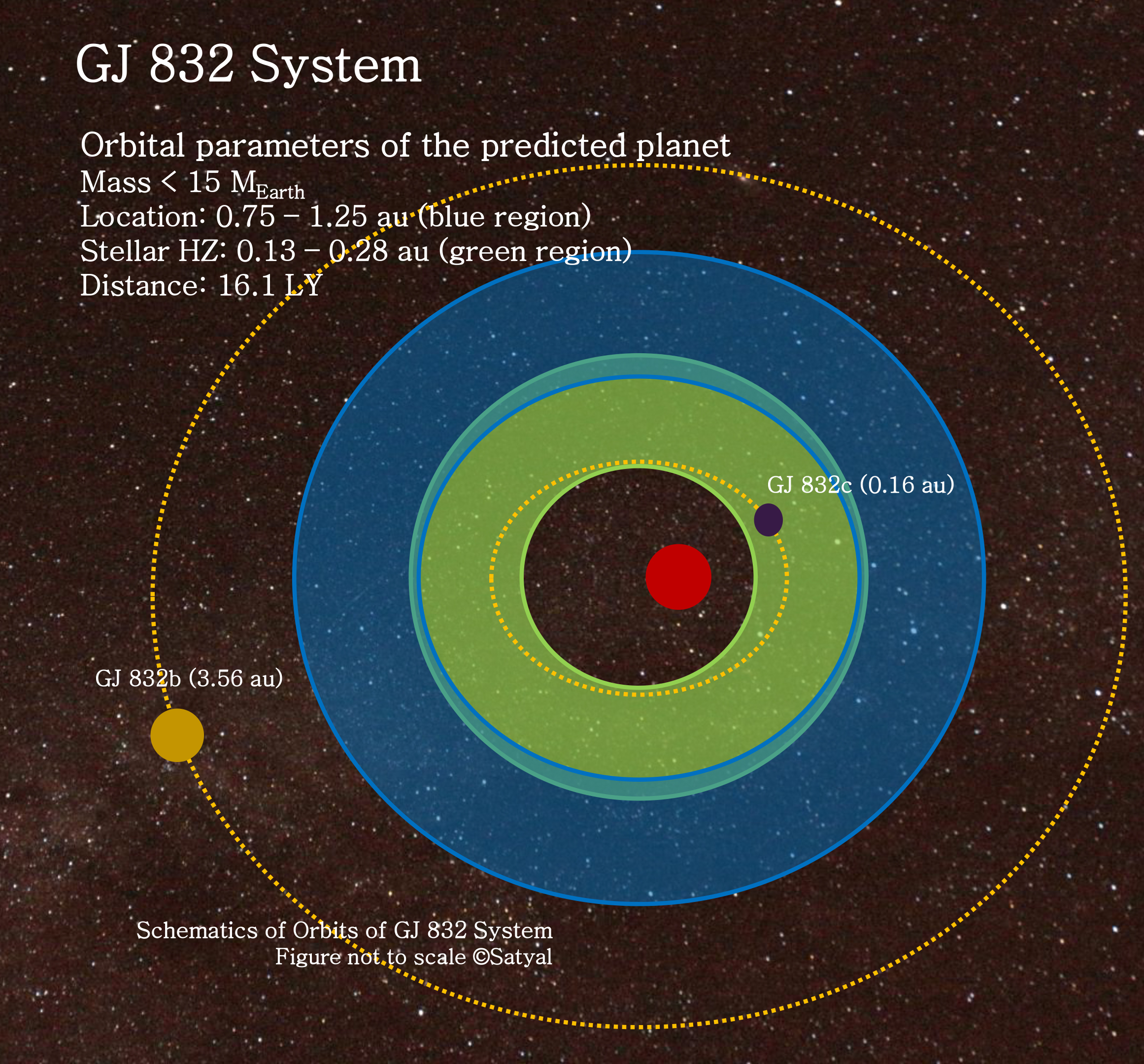Astrophysicists at the University of Texas at Arlington have predicted that an Earth-like planet may be lurking in a star system just 16 light years away.
The team investigated the star system Gliese 832 for additional exoplanets residing between the two currently known alien worlds in this system. Their computations revealed that an additional Earth-like planet with a dynamically stable configuration may be residing at a distance ranging from 0.25 to 2.0 astronomical unit (AU) from the star.
According to researchers planet could maintain a stable orbit in the habitable zone of a red dwarf for more than 1 billion years is extremely impressive and demonstrates the world class capabilities of our department's astrophysics group.
Gliese 832 is a red dwarf and has just under half the mass and radius of our sun. The star is orbited by a giant Jupiter-like exoplanet designated Gliese 832b and by a super-Earth planet Gliese 832c. The gas giant with 0.64 Jupiter masses is orbiting the star at a distance of 3.53 AU, while the other planet is potentially a rocky world, around five times more massive than the Earth, residing very close its host star about 0.16 AU.
For this research, the team analyzed the simulated data with an injected Earth-mass planet on this nearby planetary system hoping to find a stable orbital configuration for the planet that may be located in a vast space between the two known planets.
Gliese 832b and Gliese 832c were discovered by the radial velocity technique, which detects variations in the velocity of the central star, due to the changing direction of the gravitational pull from an unseen exoplanet as it orbits the star. By regularly looking at the spectrum of a star and so, measuring its velocity one can see if it moves periodically due to the influence of a companion.
For instance, if the new planet is located around 1 AU from the star, it has an upper mass limit of 10 Earth masses and a generated radial velocity signal of 1.4 meters per second. A planet with about the mass of the Earth at the same location would have radial velocity signal of only 0.14 m/s, thus much smaller and hard to detect with the current technology.
